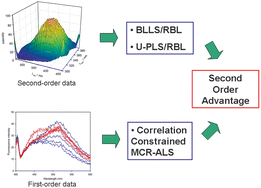Application of the correlation constrained multivariate curve resolution alternating least-squares method for analyte quantitation in the presence of unexpected interferences using first-order instrumental data†
Abstract
Correlation constrained multivariate curve resolution-alternating least-squares is shown to be a feasible method for processing first-order instrumental data and achieve


 Please wait while we load your content...
Please wait while we load your content...